Editor’s note: Thanks to correspondent Don Enright for this account of his visit to the Bill Reid Gallery of Northwest Coast Art. This story is part of an arms length collaboration with Indigenous Tourism BC.
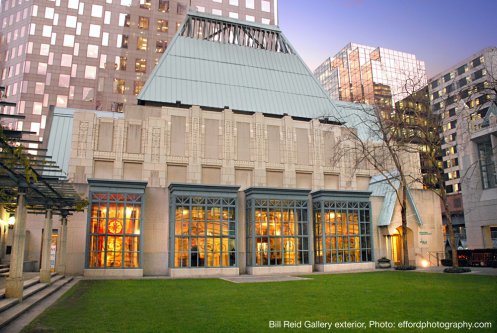
Image courtesy of the Bill Reid Gallery of Northwest Coast Art
My neck is sore from craning upwards but I can’t tear my eyes away.
The twisted mythic figures of the huge bronze sculpture mounted in the Bill Reid Gallery of Northwest Coast Art are at once modern and ancient, erotic and repulsive, comic and violent, fluid and grotesque.
How is this work of art not famous? Why is it not in every Canadian school curriculum? Surely it is as important, as seminal, as any Group of Seven painting celebrated in this country?
Why has nobody heard of Bill Reid’s “Mythic Messengers”?
Bill Reid, the son of an American hotelier, was born in Victoria, B.C. in 1920. His mother, Sophie Gladstone, was a Haida woman who raised her son in the Euro-Canadian tradition. Reid had no idea that his roots were in Haida Gwaii (formerly the Queen Charlotte Islands) until his teens, when his mother’s family would visit, wearing their exquisite, handmade gold and silver jewelry.
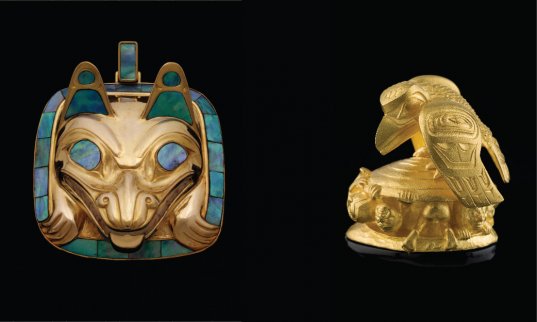
Wolf Pendant and The Raven and the First Men / Artist: Bill Reid / Image courtesy of the Bill Reid Gallery of Northwest Coast Art / Photo: Kenji Nagai
Reid had no formal art training in his early years. He became a broadcaster, eventually landing in Toronto. (Recordings of the time feature his classic CBC diction: he sounds like a young Michael Enright.) In Toronto, he repeatedly visited West Coast art exhibits at the Royal Ontario Museum, fixating on a particular pole from his mother’s ancestral village of Tanu.
In his late twenties he enrolled in jewelry making at Ryerson University, and a few years later was applying his European jewelry-making skills to traditional Haida forms in a makeshift basement studio in Vancouver.
When he was offered a job leading the reconstruction of part of a Haida village at the University of British Columbia, Reid leapt at the chance. It was a bold move—he had to teach himself pole-making on the fly. But he would go on to influence an entire generation of West Coast artists.
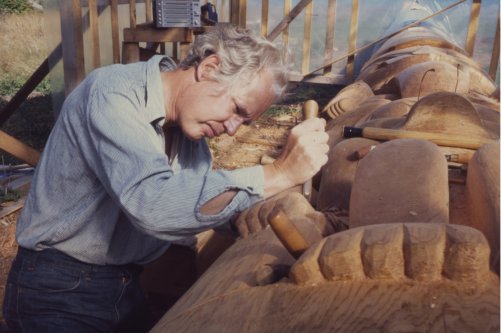
Bill Reid carving Skidegate Pole / Image courtesy of the Bill Reid Gallery of Northwest Coast Art
His most famous sculpture, “The Spirit of Haida Gwaii,” resides at the Canadian Embassy in Washington, D.C.; a replica is seen by thousands of people each year at the Vancouver International Airport.
It took Reid a lifetime to fully embrace his Haida heritage. “I’m a citizen of the West Coast of North America,” he once declared.
But the more he dedicated himself to Haida art, the more he found the cultural and political aspects of First Nations life in Canada difficult to ignore.
Eventually he would stand with his people at the pivotal Lyell Island logging protests in 1985, wearing the wolf insignia that was his birthright. He died of Parkinson’s disease in 1998.
We need to see more Bill Reid in this country. He was in some ways a lost soul, a questioner, the quintessential Canadian spending a lifetime in search of his culture.
But success was his, ultimately—success borne out of his restlessness, his fearlessness, his tireless discipline.
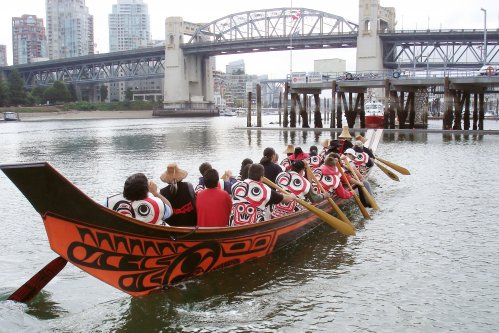
Black Eagle Canoe / Artist Bill Reid / Image courtesy of the Bill Reid Gallery of Northwest Coast Art
If you ever need a glimpse of what perfection looks like—a uniquely West Coast perfection—visiting the Bill Reid Gallery of Northwest Coast Art on Vancouver’s Hornby Street is a must.
Start with Reid’s early-period gold and silver works, and move on to the stunning Milky Way Necklace and the spiritual Dogfish Woman.
When you’re ready, look up—high on the central wall. “Mythic Messengers” will be waiting for you.
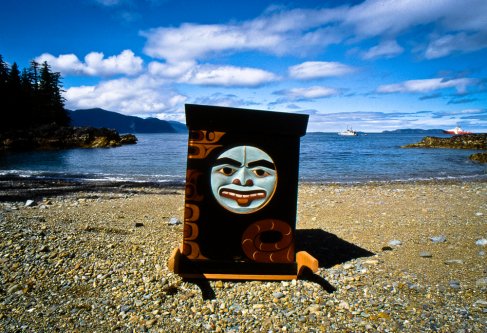
Bill Reid’s burial box by Haida artist, Don Yeomans / Tanu, Haida Gwaii / Photo by Suzanne Ahearne
*A special thanks to our long time friend and collaborator Suzanne Ahearne for sharing the final photo in this post—a rare image of the funeral box carrying Bill Reid’s remains, a box which was ceremoniously carried by canoe along Canada’s Pacific Coast to Tanu Island, Haida Gwaii (the ancestral home of Reid’s mother) after his passing.
